| |
| CLICK HERE FOR INDEX PAGE |
| |
| BUTTON BATTERIES /COIN CELLS AND SIMPLE CIRCUITS |
| |
| V. Ryan © 2008-2022 |
| |
| A button cell is a very small battery. A good example
is the type found in most modern watches. This type of battery is often
used in camcorders as backup batteries. They ensure that the date and time
are held in memory even when the rechargeable batteries are removed.
Button batteries are usually rated at 1.5 volts or 3 volts and
consequently they are used in devices that need very little power. Watches
are ideal for this type of battery as well as low power calculators and
hearing aids. Large button batteries are used as backup batteries for the
CMOS of computer systems and ensure that the basic settings in the setup
of the computer are held in memory, even when the computer is switched
off. |
| |
| TYPICAL BUTTON CELL |
| |
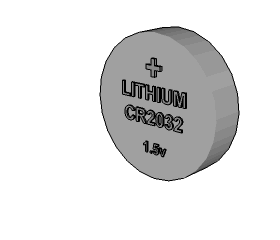 |
| |
|
|
| |
The diagram below shows an LED and two button
batteries. When the legs of the LED are pressed against the positive and
negative sides of the batteries the LED lights. If an ultra bright LED is
used the light is quite intense.
The two coin cells shown are each 1.5 volts. A typical LED needs 3 volts
to emit light effectively. |
| |
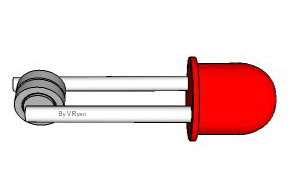 |
| |
| The circuit diagram is shown below. The battery, switch
and LED symbols have been included. Although no switch is used in reality,
the switch mimics the two fingers pressing the legs of the LED together
against the batteries. |
| |
 |
| |
|
|
| |
| If each button battery is rated as 1.5 volts, when two
are arranged in series as shown in the diagram below, together they are
rated as 3 volts. Putting batteries together in series simply means adding
the voltages together. In this way button batteries can be used to provide
higher voltage outputs. |
| |
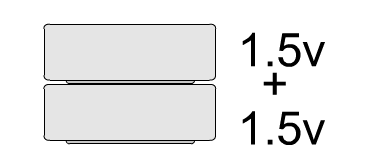 |
| |
A simple LED torch can be
made by using two sides of compressed polystyrene (high density
polystyrene), two button batteries, an LED and a piece of foam. The
polystyrene sides are held together by double sided tape.
The foam keeps the legs of the LED from touching the terminals of the
button batteries. When the torch is pressed the legs of the LED make
contact with the batteries and the LED lights. |
| |
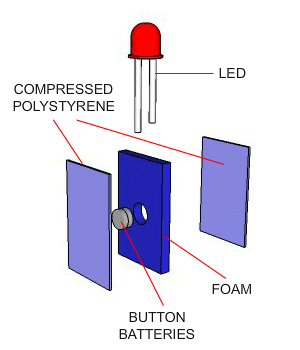 |
| |
| The small hand held torch seen below has 4 button
batteries each rated at 1.5 volts. This means that the sum of the
batteries is equal to 6 volts. This is enough to allow the bulb to light.
Bulbs were once common in torches but they have been replaced by ultra
bright LEDs. LEDs are more efficient than bulbs, requiring less power and
they can last for thousands of hours when in use. Bulbs on the other hand
tend to blow/fail after a relatively short time. |
| |
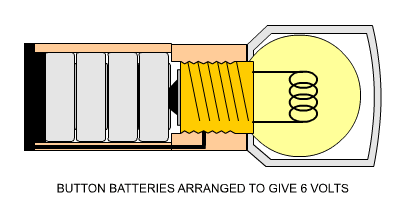 |
| |
|
|
| |
| SIMPLE DESIGN SHEET LAYOUT |
| |
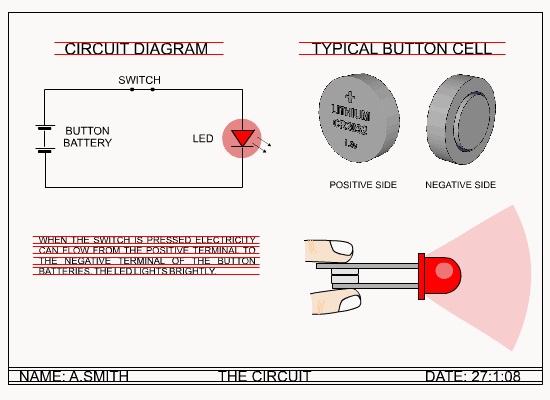 |
| |
| CLICK HERE FOR ELECTRONICS
INDEX PAGE |
| |
| |
| |






